Today’s blog post is sponsored by Connet Laser– a leading developer and manufacturer of fiber lasers and amplifiers.
Optical illusions fool the eyes and play tricks on the brain. They mess with human perception and how the brain responds to shapes, colors, and patterns. They indiscriminately deceive both the young and old. All ages are subject to responding with equal parts childlike wonder and incredulity to the mild entertainment optical illusions can provide. Here is a breakdown of what may be ten of the most recognizable optical illusions.
Optical illusions tend to fall into three categories. Literal optical illusions are when the image seen is different than the ones that compose it. Literal optical illusions depend on the viewer’s perception. The second category are psychological optical illusions. These kinds of illusions over-stimulate the brain. For instance, at first glance a stationary image may appear to move. The final kind of optical illusion are cognitive. This kind of illusion depends on how the mind relates objects or images to each other. All three categories will be represented in the optical illusions explored below.
The Boring Figure, My Wife and My Mother-In-Law
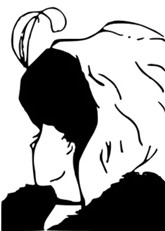
One of the versions of the Boring Figure. Courtesy of Gizmodo.
This optical illusion is referenced by two names, one of which is after Edwin Boring. He was a psychologist who wrote about the illusion in 1930. It is an ambiguous illusion in that one can see two different images as their perception shifts. One way of perceiving the image is to see a younger woman with a choker with her face turned away from the viewer. The other way is to see an older woman whose mouth is now the choker of the younger one.
Café Wall Optical Illusions
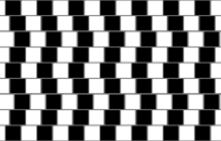
The Café Wall illusion looks like the horizontal strips are angled. Courtesy of Illusion Index.
The café wall illusion appears to have sloped strips of alternating black and white squares. However, the horizontal lines are actually parallel to one another. The exact cause of why the image is interpreted in this manner remains unclear.
Escher’s Waterfall
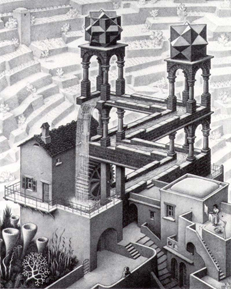
Esher’s Waterfall is an example of an impossible figure. Courtesy of Totally History.
This illusion by Dutch artist M.C. Escher is an impossible figure. The water falls from the tower and is seemingly pumped back up to the top. However, the water being recycled from the base, the falls appears to run downhill, except following it downhill causes one to return to the top of the waterfall.
Kanizsa’s Triangle, Gestalt Effect
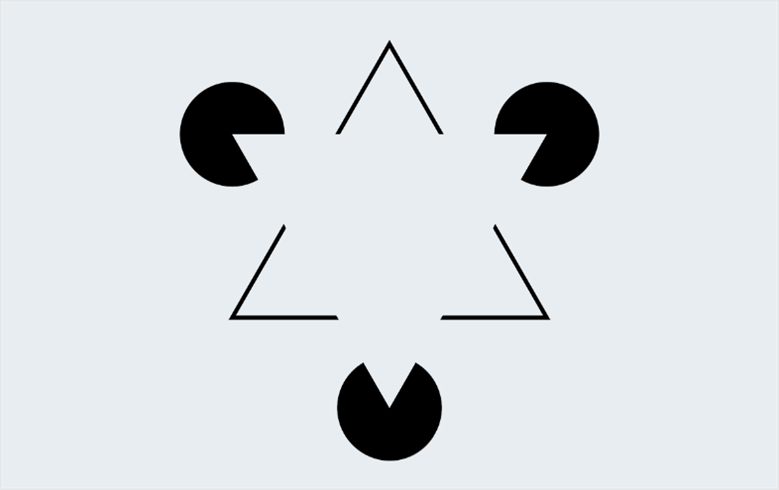
Kanizsa’s Triangle. Courtesy of Visme
In this illusion, the brain fills in the gap to portray an upside-down triangle in the center of the image, even though there are no lines drawn to explicitly convey this shape. This triangle also appears brighter than the background despite being the same brightness. Gaetano Kanizsa, a psychologist commenting on the illusion, thought it supported the argument that perception is based on experience and not solely on what is seen.
Lilac Chaser Optical Illusions
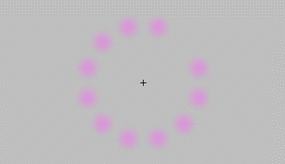
With the Lilac Chaser illusion, the viewer observes different effects over time. Courtesy of Very Well Mind.
Above is a still frame of the Lilac Chaser illusion. If one stares at the cross in the center of the lilac dots, they will observe different things. In the beginning, a blank space will circle through the lilac dots. After a short period of time, 10-20 seconds, this blank space appears as a green disk. If one stares longer, eventually the lilac disks will fade to nothing and only the green disk will be observed. The disks disappear due to Troxler fading which causes peripheral objects to fade after focusing on a specific location for a given period.
Illusory Motion
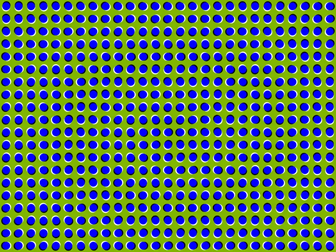
The dots appear to move when they are actually stationary. Courtesy of Business Insider.
This image is static, but it appears to be in motion unless concentrating on a specific part of the image. Researchers out of the Barrow Neurological Institute have attributed this appearance of motion to small eye movements and blinking.
Ames Room
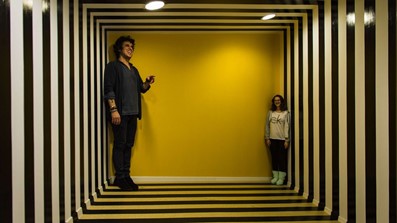
The image above is a prime example of the deception of an Ames Room. Courtesy of Which Museum.
If you have been to a children’s museum, odds are one of the exhibits was the Ames Room. In this setup, the room distorts the perception of the scene. The back wall, floor, and ceiling of an Ames Room are slanted without it being obvious to the viewer. This makes individuals and objects look significantly larger on one side of the view than another.
Ebbinghaus Optical Illusions

The two center circles appear to be different sizes when they are the same size. Courtesy of The Guardian.
The center circle on the left looks larger than the center circle on the right when in reality they are the same size. In 2019, researchers studied whether this illusion was more dependent on the retinal size or the perceived size of the surrounding stimuli. Their results indicated that the effect was due more in part to the retinal size.
Shepard’s Tables
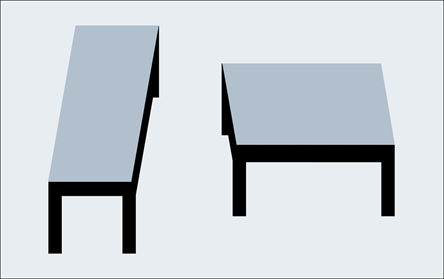
Shepard’s Tables optical illusion. Courtesy of Michael Bach.
This illusion was introduced by Stanford psychologist Roger Shepard. Both the tables pictured are the same size, though they do not appear that way. Each of the tabletops are parallelograms of the same shape, just oriented 45o to one another. The different size interpretation is due to the brain attempting to make a 3-dimensional understanding of a 2-dimensional object. This is in part because of the way the drawings are shaded.
Hermann Grid
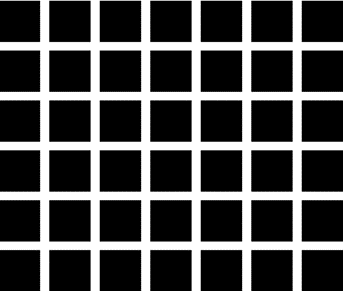
Grey spots form at each of the intersection points in Hermann’s Grid. Courtesy of Illusions Index.
In this illusion, there appears to be grey blobs between each of the intersections of the white gridlines. However, if the focus is shifted to the blobs themselves, they disappear. This illusion was discovered by German physiologist Ludimar Hermann. Some say that this effect is because of retinal cells adjusting between the brightness of the white lines and the darkness of the black squares. When viewing the grid with an intersection point as the focus, it lands on the fovea with a large amount of photoreceptors, making it easier to recognize the white cross as it is.

too clever. l did not see tthroigh the illusions of the pair of tables, lilacs & Ames room
It seems that the corner that the woman stands on is longer in height, so that the ground is tilting lower and ceiling is tiling higher relative to the other corners; but because the back wall is also tilted so that the woman’s corner is further away from the viewer than the man’s corner it appears that the back wall is square…